Love Comes Again Digital Dreamerz 320
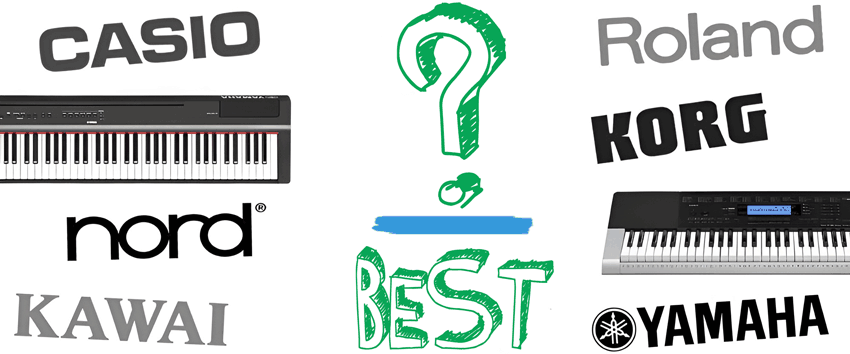
When information technology comes to choosing a keyboard, there are no fashion statements.
The top digital piano brands are all about function – that's carefully quality-controlled technological excellence wrapped upward in a product that has been honed through years of iterations and tweaks.
As we strive for authenticity in both sound and touch, so it becomes more difficult and expensive for brands to come across our expectations as customers, to the point where a bad choice can leave you seriously out of pocket, saddled with a product that doesn't feel natural or audio loftier-quality.
Of course, y'all and then run the risk of developing bad finger technique to compensate for a poor activity.
In that location are certainly digital pianoforte brands to avert – more on that later.
But today nosotros volition focus on the crème de la crème – the most reliable and trustworthy digital piano brands out in that location.
Let's accept a look at what the market has to offering.
Digital Pianoforte Development: And so and At present
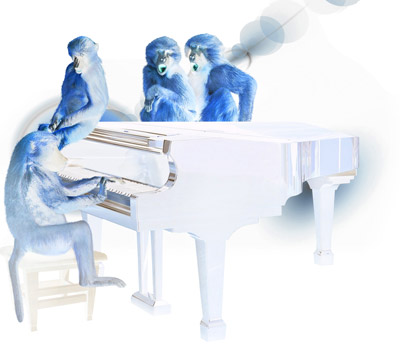
The idea of pianos being electrical has been around since the 1920s, merely it wasn't until the late 50s when they truly became popular.
Artists similar Ray Charles started digitally altering sounds and the concept of a lighter, more diverse alternative to a standard upright or grand was actually born.
From then upwardly until the 90s, the digital piano was a different instrument – a recognizably false sound, ready-made for synth and funk.
Just as things changed, companies started existence able to very closely replicate the audio of an audio-visual instrument and the demand for straight-up pianoforte imitations grew.
Fast forward to the present day and the amount of realism you get from a digital pianoforte is infrequent – from the sound right downwards to the actual feel of the keys.
And with that selection sitting alongside specialist synth models, 161,000 digital pianos were sold in the Usa alone in 2017.
But technological advances have got u.s.a. to such a betoken now where y'all can actually accept both – an instrument that looks, sounds and feels like a pianoforte, while being digitally programmed to offer a broad range of sounds, connectivity and recording options, all in one.
And of course, as more companies pick up on this, competition increases and drives the price of entry-level models down.
There are also "true" hybrids at present available; real acoustic pianos with strings and mechanisms like traditional pianos, but with embedded digital functionality.
They are expensive at the moment, merely you can certainly continue rails of them from the acme digital pianoforte brands (as long equally you know who they are and what to look for!)
Best Digital Piano Brands
Afterward doing some basic enquiry on digital pianos and their features, you'll quickly realize that there are dozens of different brands available on the market, and some of them you lot've probably never even heard of.
Do all digital piano brands offer the aforementioned level of quality and reliability?
Of course, not. In fact, there are some brands you should avert at all costs.
To brand it easier for you we'll try to embrace all the popular keyboard brands and talk about their strengths and weaknesses.
We'll start with 7 virtually reliable and trustworthy brands that we recommend based on our and other people's experience, and and so we'll move on to brands that are better be avoided (with some exceptions).

- So here are the All-time digital piano brands:
- Yamaha
- Casio
- Roland
- Kawai
- Korg
- Nord (Clavia)
- Dexibell
To get a bird'southward middle view of these brands and their product lines, take a look at the comparison table below.
[Comparing Table of the Best Digital Pianoforte Brands]
-
Country
Where the company is based.
rare
Don't become information technology dislocated with the land of manufacturing! Near digital pianos and keyboards nowadays are fabricated in China, Indonesia, and Malaysia. Some higher-end models are made in Japan or Europe, just it's pretty.
-
On the Market place Since
The yr when the company entered the digital piano market.
-
Areas of
ExpertisePrimal areas the company is known for.
-
Portable
KeyboardsPortable Keyboards (A.k.a portable arrangers, portable arranger keyboards) are
entry-levelinstruments that unremarkably come with 49, 61, or 73 non-weighted or semi-weighted keys, hundreds of sounds, styles, recording, and interactive features.
They don't aim to replace an audio-visual pianoforte but rather introduce you to the world of music.
They're most popular amidst beginners and kids in item. -
Portable DPs
Unlike portable keyboards, portable digital pianos (a.k.a. slab pianos) come up with 88 fully weighted hammer-activity keys, which mimic the action of an acoustic piano, and use loftier-quality piano samples. They rarely have tons of built-in tones, styles, and other so-called "bells and whistles" equally their main goal is to sound and feel as close as possible to a real acoustic piano.
-
Habitation DPs
Habitation Digital Pianos (a.thou.a. Panel DPs) are
verysimilar to portable DPs with regard to their main concept, which is to provide a realistic piano playing feel (sound and touch beingness the nigh important).
The principal difference, though, is that Dwelling DPs have a furniture cabinet design and come with 3 piano pedals, which gives them a more acoustic-like await. -
Premium Home DPs
College-end Dwelling house Digital Pianos usually comprise a more sophisticated hammer action, higher quality samples (with some modeled elements), multi-speaker sound organization, and fancier, more audio-visual-like chiffonier.
-
Hybrid DPs
Hybrid Digital Pianos are the almost expensive type of digital pianos. They commonly have highest quality samples, sophisticated audio system, and action that fully replicates the activeness of an acoustic piano.
the closest
Hybrid pianos come(in all aspects) to real acoustic pianos.
-
Stage Pianos
Phase Pianos are very similar to Portable DPs merely the chief difference is that they unremarkably
don't have any congenital-in speakers. Frequently, they're also lighter, and more compact, which makes them even easier to move around.
Portable DPs are often used as Phase Pianos likewise. -
Synths/Music Workstations
Synthesizers are widely used in complex sound design and music production. They offer extensive options that let y'all to synthesize, fine-tune, and command the sound in existent time.
anything
Music Workstations/Synth Workstations have much more options, and therefore more universal.
They permit you to do basicallyrelated to music production, starting from sound design, and ending with mixing and recording.
-
Arranger Workstations
Arranger workstations are similar to other types of workstations but come with boosted features for songwriters, composers, and solo performers.
fewer options
In particular, arrangers unremarkably have hundreds of accompaniment styles that will dorsum up your performance with diverse instruments, making you sound like a total band.
Compared to synth workstations, arranger workstations havefor sound synthesis and editing.
-
Most Popular DPs
Most pop digital pianos of each brand
-
Japan
-
1983
-
Audio-visual, Digital, Hybrid, Stage Pianos, Synths, Music Workstations, Arrangers
-
YPT | PSR-E | NP | EZ (light-upwards keys)
-
Portable
(P-series)Portable Grand (DGX series)
-
Arius
(YDP, YDP-S serial) -
Clavinova
(CLP, CSP, CVP series) -
Beginner:
• P-45
• YDP-103
Intermediate:
• P-125
• DGX-660
• YDP-144
Advanced:
• P-515
• CP88/CP73
• YDP-184
• CLP-745
-
Nihon
-
1980
-
Digital & Hybrid Pianos, Portable Keyboards, Arrangers
-
CTK | CT-Ten | WK |
LK (light-up keys) -
Privia
(PX series)CDP & CGP
-
Privia (PX series)
Celviano (AP series)
-
Marketplace their portable PX, CDP & CGP keyboards as stage pianos likewise
-
Japan
-
1973
-
Premium Home DPs, Phase Pianos, Synths, Music Workstations
-
Intermediate:
• FP-30
• FP-sixty
• RP-102
• F-140R
Avant-garde:
• FP-90
• RD-2000
• DP-603
• HP-704
-
Nihon
-
1980
-
Digital Pianos, Synths, Music Workstations, Arrangers, Product Tools
-
Beginner:
• B2
• SP-170s
Intermediate:
• SP280
• C1 Air
• G1 Air
Advanced:
• SV-two
• GrandStage
• Krome EX
• Kronos 88
-
Nippon
-
1985
-
Audio-visual Pianos, Premium Home Digital Pianos, Stage Pianos
-
Intermediate:
• ES110
• KDP110
Advanced:
• ES8
• CA49
• CA59
• MP11SE
• VPC1
-
Sweden
-
1995
-
Stage Pianos, Performance Synthesizers
Yamaha
| Founded | Headquarters | Factories | Number of employees | Revenue (2017) | Products |
|---|---|---|---|---|---|
| 1887 | Hamamatsu, Japan | Japan, China, Indonesia | 28 112 (2017) | 3673 million dollars (2017) | Musical Instruments, Sound Equipment, Electronics |
There is no discussion of the best digital piano manufacturers in the world without Yamaha.
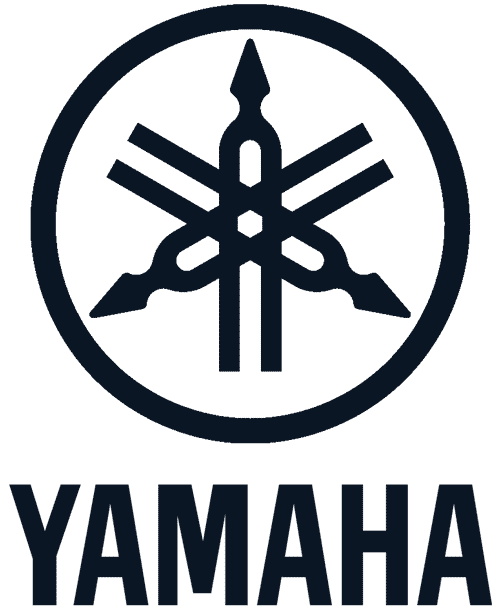
They are the most pop, the oldest and have the largest, near versatile range out there. In fact, you lot have to go back to 1887 to find their first organ, built by Torakusu Yamaha himself.
A Japanese company, their acoustic and digital pianos are made in enormous factories across Nihon, China, and Republic of indonesia before being exported worldwide. In 2017, the company's full revenue beyond all its products was over $3 billion.
The secret to Yamaha's success stems from their foundations in audio-visual pianos.
Their upright and grands are used everywhere from schools to concert halls and it is this attention to the mechanics of a "existent" pianoforte which has served them in such good stead when creating a digital sound.
Fundamental to this is their pianoforte-like graded hammer activeness, which is present in all their digital pianos, albeit at different levels of quality.
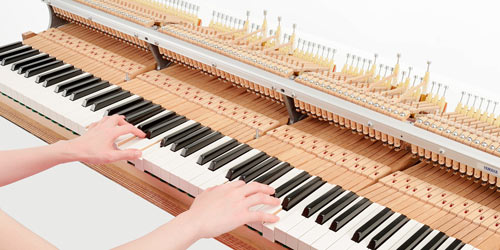
From GHS in their entry-level range, to GH3X in some of the Clavinovas, right the way up to the state-of-the-art GrandTouch wooden action, Yamaha place a great deal of focus on touch – and it shows.
With such a great range of options and prices, information technology's no surprise that they commanded a 32.six% marketplace share in 2016.
The affordable, entry-level PSR-E range is immensely popular with kids and beginners, with some models available for less than $200.
Compare this to the world-renowned Clavinova range – 1 of the upright CLP models might set you up a couple of thousand dollars, simply a digital grand like the incredible CVP-709GP is more similar $fifteen,000.
With their background in music technology, Yamaha too offering excellent stage and studio pianos.
Their extremely popular meaty P series models start at $400, but there are models with more functions and improve realism, available all the way up the price range.
As with all of Yamaha's digital pianos, they are seriously durable and reliable – one of the best features of the make.
The Yamaha 3-yr warranty covers the bulk of their brands, just the Clavinova range benefits from 5 years, which reflects the engineering confidence that Yamaha have in the series.
The pro-standard PSR-S models are higher-cease, simply fully-focused arranger workstations, rather than entry-level keyboards.
Far more popular though is the Yamaha Montage range, which competes with the well-known Korg KRONOS and Nord Stage 3 keyboards.
The primary features are 6347 waveforms (twice as much compared to the MOXF serial), over 10 000 arpeggios, Seamless Switching Audio (SSS) technology, and a 16-rail MIDI sequencer.
If your main focus is going to exist pianoforte, you'll desire to have a await at their highly-popular piano-focused models (digital pianos):
P series – portable digital pianos for beginners all the fashion to advanced players
YDP series – console type dwelling house digital pianos, similar to P serial, but non as portable and gig-friendly
Clavinova – their famous high-terminate home digital pianos offering the best technology in Yamaha's arsenal
Meanwhile, they are as well at the forefront of the hybrid era, with their TransAcoustic pianos being truthful acoustic models with digital features such as headphone inputs and volume control, as well every bit the ability to replicate different m pianoforte models through an app.
Beyond their styles and ranges though, Yamaha products are used and endorsed past well-known musicians and studios worldwide.
From Stevie Wonder and Justin Timberlake in the mainstream world to Alberto Pizzo and HJ Lim on the classical side, the instruments are well-represented and highly regarded.
Pros
- Wide range of products for every budget, level, and need
- Extensive groundwork in the field
- Yamaha'due south signature audio
- Recognized all over the world
- Solid Customer Service
Cons
- Not the nearly realistic action (GHS) in their lower-end DPs
- (Arguably) Slow design of some of their instruments
- Quite conservative when it comes to new technologies
Casio
| Founded | Headquarters | Factories | Number of employees | Revenue (2017) | Products |
|---|---|---|---|---|---|
| 1946 | Tokyo, Japan | Japan, China, Thailand | 12 287 (2017) | 2953 million dollars (2017) | Calculators, Watches, Projectors, Electronic Musical Instruments |

Another major Japanese multinational, Casio are probably more well-known to you for watches, calculators and cameras than they are for digital pianos.
However, from that solid digital base has arisen one of the best brands out in that location, especially seeing as they've only actually made a name for themselves in the marketplace over the concluding 15-20 years.
While the company itself has been running from 1946, and the first marketable keyboard – the Casitone 201 – was released back in 1980, it was the launch of the Privia range in 2003 that actually saw Casio make its mark on the manufacture.
Lightweight, meaty, but affordable, they quickly positioned themselves slightly differently in the market to giants such every bit Yamaha.
Their pianos are well-known every bit being very budget-friendly and geared towards beginners and amateurs.
However, they don't lag behind on technology, and some of the features on their pianos are only available on much higher-priced models of competitors.
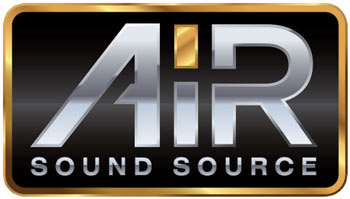
Their Celviano range, for example, is a direct competitor to the Yamaha Clavinova, with the tiptop-notch AiR Thousand Sound Source and multi-speaker acoustic audio simulation, but for over a m dollars cheaper all the way up the range.
Granted, you don't go the same quality of action as with a Clavinova, equally they use the same action in the Celviano range as they do in the Privia, but it's a skilful choice if you're on a tight budget.
Casio'due south Grand Hybrid series is also a part of the Celviano family unit but these are completely dissimilar beasts.
The GP-310 and GP-510 models feature a meticulously designed hybrid key action that closely resembles that of an acoustic yard.
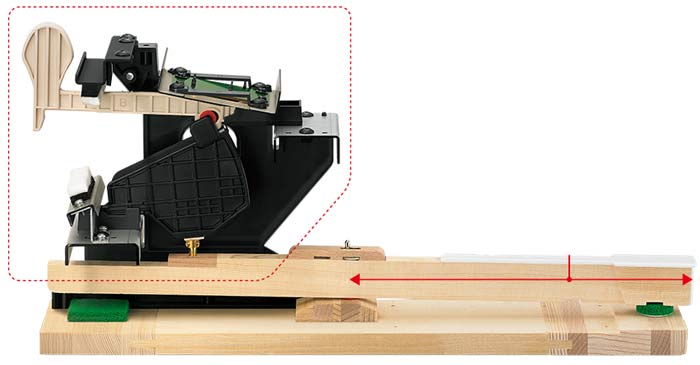
Casio's M Hybrid primal action
The keys are made of real wood and the onboard 6-speaker sound organisation is truly impressive.
These are the nigh advanced digital pianos y'all'll observe in Casio's arsenal. They compete with Yamaha's AvantGrand series and Kawai's NV hybrid serial.
Generally speaking though, at that place isn't a not bad deal exterior the Celviano range to interest a pro.
This ways you don't actually see Casio models represented on stages or in studios, meaning that they don't become a lot of airtime.
Nevertheless, in keeping with their back up for young musician programs through the Grammy Foundation, they piece of work with several contemporary artists, including World Wind & Burn'southward Larry Dunn and singer-songwriter Rachel Sage.
Of form, the flip side to this is that their prices remain some of the most competitive out in that location.
The warranties are likewise competitive, with iii years on the Privia range and 5 on the Celvianos standing out from the crowd (their regular warranty offer is 12 months).
Because Casio are so focused on youngsters and beginners, the audio modes and interfaces are all exceptionally user-friendly.
While you won't discover a massive range of options and modulations available, these are instantly attainable pianos that are neat for edifice confidence and cognition of digital pianoforte technology.
And while the compact buy room-filling PX series will cost between $400 for a PX-160 and $1200 for a studio-grade PX-560, the CDP pianos – their targeted beginner range are much cheaper, despite having a basic weighted action and excellent speakers.
The Privia line undoubtedly remains the almost popular from Casio'south arsenal. It's very versatile includes digital pianos of dissimilar types (console, portable) and price ranges.
Pros
- Affordable
- Beginners friendly
- Great value for coin
- Not limited to which acoustic pianos to sample (other major brands similar Yamaha or Kawai tend to use their ain pianos)
- A lot of features on Casio DPs are simply available on much higher priced models of other brands
Cons
- Quite limited product range
- Not a lot of keyboards for pros
- Tri-sensor Scaled Hammer Action II that Casio use in many of their Privia models tends to exist a fleck "noisier" compared to its competitors
Roland
| Founded | Headquarters | Factories | Number of employees | Revenue (2017) | Products |
|---|---|---|---|---|---|
| 1972 | Hamamatsu, Japan | Japan, Malaysia, People's republic of china | 3060 (2013) | 788 1000000 dollars (2014) | Electronic Musical Instruments (Pianos, Organs, Synths, Drums), Audio Equipment |

Dissimilar Yamaha and Casio, Roland's main focus is music.
Founded in Nippon in Osaka in 1972, the company still operates out of Japan and their keyboards are considered to be among the nigh important digital musical products always released in terms of driving forward the market.
What you can expect from Roland is 40 years' worth of honed digital piano.
Their products are exceptionally loftier-quality throughout their ranges and as they only focus on digital models, you lot could argue that they are better placed than any other company on this listing to be industry pioneers.
The 3D video bout (drag your mouse to become a 360° view) below will walk you through all the ranges of musical instruments that Roland take been creating and improving over the years.
As you would expect then, their instrumental range is extensive; from stage pianos to console digitals and portable models, their branding is recognizable and their products are built to last.
The RD stage series is probably the toughest, nigh durable stage pick out at that place.
In fact, Roland are so confident about their products, that the HP, LX, HPi, DP, KF and GP models all benefit from an astonishing 10-twelvemonth warranty, that represents the all-time on the marketplace.
The corresponding product support is fantabulous as well, with regular organisation updates and excellent terms on repair.
And their official sites are total of tutorials to assist yous get to grips with your new instrument.
Roland have also fabricated substantial strides forward on their cardinal deportment.

Roland'south flagship central action – PHA-50
The PHA-4 Concert activity includes keys that simulate ivory, preventing your fingers from slipping off the keys, while their flagship woods hybrid action, PHA-50, is available on the DP and HP ranges, as well as the FP-90 (flagship of the portable FP series) and the RD-2000 stage piano.
The centers of the keys are made from existent woods, with the ivory experience of PHA-4 intact on the exterior.
Along with this is their pedal system, which features the ability to reprogram the soft and sostenuto pedals to dissimilar weights and functions.
While there is no doubting the quality of the Roland brand though, their products are expensive.
In the portable range, the FP-90 is nearly $1900; the equivalent Yamaha P series is only $1499.
The top-of-the-range 5-Piano grand is just shy of $xx,000. Bearing in mind you're looking at the top of the range though, this isn't actually a surprise.
But if yous're looking at the affordable and very popular RP (home) and FP (portable) serial, you'll exist able to benefit from their SuperNATURAL technology, which focuses on natural tone alteration depending on velocity, and note decay, for a more real sound also as the PHA-4 Standard keyboard with Ivory touch keys and Escapement feature, which is considered i of the best fundamental deportment in its class.
Pros
- Tech savvy (onboard Bluetooth support on near of their DPs, physical modeling, etc.)
- Trusted effectually the world
- PHA-4/PHA-fifty fundamental actions are among the all-time in their grade
- Great Piano Partner 2 app (can exist used via Bluetooth)
- Non limited to which acoustic pianos to sample
Cons
- Limited selection of beginner keyboards
- Some people find their piano tones a chip besides bright
- On the expensive side
Kawai
| Founded | Headquarters | Factories | Number of employees | Acquirement (2017) | Products |
|---|---|---|---|---|---|
| 1927 | Hamamatsu, Nippon | Nihon, Indonesia, China | 2868 (2016) | 652 million dollars (2018) | Audio-visual Pianos, Digital Pianos, Electronic Keyboards |

If y'all want to get even more focused than Roland, and so Kawai are pure pianoforte specialists – both acoustic and digital.
They were founded in 1927 with its headquarters in Hamamatsu, Japan – the same city that Roland now take their own HQ.
Despite existence less well-known globally than Yamaha or Roland though, they have expanded massively in contempo years, into Russia, America and China.
Their products are seriously good too, with their upright CN series winning the MMR Dealers' Choice "Domicile Digital Pianoforte Line of the Year" in 2014 and their subsequent products excelling at the same awards every twelvemonth since.
Kawai are an expensive brand, but they know it and they market themselves equally producing professional instruments for professional musicians.
Their MP11SE phase piano offers a range of digital customization features without compromising on the real sound, just you'll pay somewhere around three grands for it.
Meanwhile, the lower-level portables – the ES110 and the pro-grade ES8 (a competitor of the Yamaha P-515 and the Roland FP-ninety) are much more affordable.
If you're going to buy Kawai – and in that location are several compelling reasons to do so – it makes sense to go for ane of their college-end models.
The CN-39″ is their best middle-range digital, with 256-note polyphony, 352 sounds and a stunning stop, for merely nether $3000.
Meanwhile, the CP series (Concert Piano) focuses on powerful output without compromising sound quality and their grand edition is possibly the most spec-heavy digital 1000 on the market place today; just it volition toll you well in excess of $20,000.
On the lower end of the spectrum, Kawai has also prepared a bunch of great instruments that are highly competitive and popular in their price ranges, the already mentioned ES110 (portable) and KDP110 (console) existence among them.
The master jewels in the Kawai crown are sound and touch – arguably the two most of import areas.
The lower register across the ranges is excellent, with powerful output and harmonic imaging pianoforte sound to kicking.
The One thousand Experience (GF) keys are wooden and operate on the same pin arrangement as Kawai'due south uprights, while the plastic folded-type RHIII activeness operates with triple sensor key action.
No matter which Kawai piano you're looking at, both the action and sound volition be near or at the top of the bachelor range.
On the hybrid side of things, Kawai offers the magnificent NOVUS NV10 Hybrid Digital Piano.
The NV10 individually weights every single cardinal and is a complete recreation of an acoustic pianoforte activity, using precision optical sensors as well equally a hybrid damper machinery that claims to exist unique on the market.
For under $10,000, that represents one of the all-time-priced high-stop pianos that Kawai offering besides.
Pros
- Fully focused on acoustic and digital pianos (no other businesses)
- Highly praised instruments (for their realism) beyond all price ranges
- Known for their realistic sound and natural feeling cardinal deportment
- Peachy Piano Partner 2 app (tin be used via Bluetooth)
- Wide selection of dwelling digital pianos
Cons
- Not much presence in the synth, arranger, and workstation department
- Few beginner keyboards (if whatsoever)
- Not as well-known worldwide as Yamaha or Roland (it's changing though)
- Pricey
Korg
| Founded | Headquarters | Factories | Number of employees | Acquirement | Products |
|---|---|---|---|---|---|
| 1962 | Inagi, Nippon | Japan, Italian republic, China, Vietnam | 290 | N/A | Electronic Musical Instruments, Audio Equipment |

Founded in Tokyo in 1962, Korg – formerly known as Keio Electronic Laboratories – are a digital merely producer of pianos, pedals, recording equipment, synthesizers and guitars.
Their master focus is digital engineering, and this is reflected in their product range, which is workstation and synth-heavy.
In fact, they are ane of the about used brands worldwide for studio-based workstations and the almost recognizable, along with Nord.
Their entry into the digital piano market is relatively recent and certainly competitive, although lacking in a high-end range.
The G1 Air, for example – their flagship digital upright – retails for nigh $1600.
And while it's not as feature-heavy as more expensive models from Yamaha, Roland or Kawai, the RH3 hammer activeness is very competitive with other brands and the digital know-how that they accept honed from their tech-heavy focus over the years is very much nowadays.
The main depict for Korg'due south digital piano range is sound.
Their newer models, such every bit the B2SP, benefit from 30w speakers and Motional Feedback Technology, which focuses on making the depression range of the keyboard baloney-gratis.
Meanwhile, the G1 Air produces astonishing audio considering its size, going full blooded in its attempt to recreate stage grands despite existence so relatively cheap and meaty compared with its competitors.
Because they are so sound-focused, you also get a range of input and outputs to cater for pretty much any situation. And design-wise, they're likewise quite innovative.
The edges of their uprights are distinctively curved and instead of having sideboards as supports, they accept separate front legs, which is unlike whatever of their competitors.
This ultimately translates to a more lightweight product, but doesn't brand them less durable.
In fact, Korg focus a lot of their development on the shells in which they go along their precious technology, simply because it's often more intricate than the competition when y'all offset to look at their workstation series.
Over to the world of stage pianos though and you find Korg in its element.
The Kronos and Kronos LS are used all over the world, with keyboardists from superstar bands like Queen displaying the brand in massive stadia.
The joystick and touch-controlled screens offer an enormous range of live and recorded options, but the quality of the bodily keyboard itself isn't sacrificed in any way.
It doesn't' suspension the banking company either, considering that yous're finer buying a portable studio.
The Kronos volition set y'all back around $3000-$4000 depending on the configuration, while the Krome keyboards are even more than affordable.
Another area where Korg excels at is pro-grade arranger workstations, and in particular, their Pa series, which could get your favorite songwriting and operation partner, providing you with the highest quality sounds and styles for virtually whatsoever genre.
Pros
- Some instruments are still produced in Japan
- Experts when it comes to pro-grade synths, keyboards, and workstations
- Not limited to which acoustic pianos to sample
- Put emphasis on the importance of high-quality speaker organisation onboard
- The RH3 key activity used in their college-end keyboards is very competitive
Cons
- Relatively pocket-sized range of consumer form digital pianos
- Some of their lower end digital pianos lack some of the popular features found in their competitors
- Limited selection of beginner keyboards
Nord
| Founded | Headquarters | Factories | Number of employees | Revenue | Products |
|---|---|---|---|---|---|
| 1983 | Stockholm, Sweden | Sweden | xxx | 20 million dollars | Stage Pianos, Synthesizers |

Every bit far as this list is concerned, yous may equally well consider Nord to be the opposite of Casio.
The only company on this listing that isn't Japanese, the Swedish company focus on loftier-end, expensive professional or studio-only models, with features and quality to match.
The visitor has been running since 1983 under the proper name Clavia Digital Musical Instruments and has the smallest product range on this list; focusing purely on synthesizers and stage pianos.
The distinctive ruddy finish that adorns the shells of their products makes them mayhap the virtually recognizable brand of stage keyboard on the market.
When you think Nord, think tech. Even on their stage piano models, the options are dizzying in their quantity.
While you will get graded hammer action keys on the Nord Piano 4, for example, information technology'southward a third-party designed action – Fatar – rather than one that has been developed in-firm, as you get with their competitors.
That's not to say information technology isn't splendid – information technology is, only part of the reason you don't see Nords outside of the stage and studio environments so much is that they aren't focused on appeasing the classical pianist who has made a crossover into digital stage performance.
These are very much instruments of the technically-minded – people with significant synth expertise and a real involvement in live digital performance.
In fact, the array of knobs and buttons beyond their range covers about every alive eventuality you lot tin remember of; looping, sampling, you proper noun it.
Their other stage models – the Electro and the Stage – are similarly kitted out and similarly expensive.
In terms of synthesizers, the Nord Lead 4 is certainly a market leader, offering wavetable synthesis, multiple stacking, and hard/soft synthesis. It is 1 of the more than expensive on the market place though.
The warranty for Nord products depends from distributor to distributor, just the visitor has built up a reputation for being the number 1 in terms of quality control .
And their list of artists is seemingly endless, albeit largely populated by session and touring musicians, showing their focus on the modern demands of touring and studio work.
And considering the relative newness of their make and particularly their focus on dedicated phase pianos, Nord have done an infrequent chore at becoming genuine competition to heavyweights such as Roland and Yamaha.
Pros
- Handmade in Sweden
- Pinnacle notch quality
- Very popular among pros (gigs, studio work)
- Highly specialized (go deeper rather than wider)
- The RH3 fundamental action used in their college-end keyboards is very competitive
Cons
- Pricey
- Very express range (pro grade keyboards only)
- Might not be the all-time choice for classically trained pianists
Dexibell
| Founded | Headquarters | Factories | Number of employees | Revenue | Products |
|---|---|---|---|---|---|
| 2015 | Acquaviva Picena, Italian republic | Italy | <100 | n/a | Stage Pianos, Digital Pianos, Digital Organs |

Dexibell is a fairly new name in the business, though this Italian company has fabricated a name for itself with consistently well-designed products that follow tried and true design cues from other established companies.
Virtually of the designers in Dexibell are actually ex-Roland employees, and that's a solid pedigree to work with. We've already talked about Roland'due south eye for design and innovation across their 40-year long legacy above, and Dexibell aims to recreate that magic.
Dexibell showtime entered the fray with their Vivo phase pianos, also known as the Vivo S-line. These pianos are still relatively unknown, but reviews and users are generally very happy with what's on offer.
The 'hush-hush sauce' to Dexibell's instruments is the use of the CORTEX-Quadcore processor, which uses a similar architecture to those used in personal computers and laptops.
This is then coupled with audio engines optimized to use the multithreaded nature, namely the piano-focused True To Life (T2L) engine.
This sound engine uses 24-bit sampling bit depth, which allows for a larger dynamic range, and the fast processor reacts to the built-in sensors, calculation racket and other details reactively.
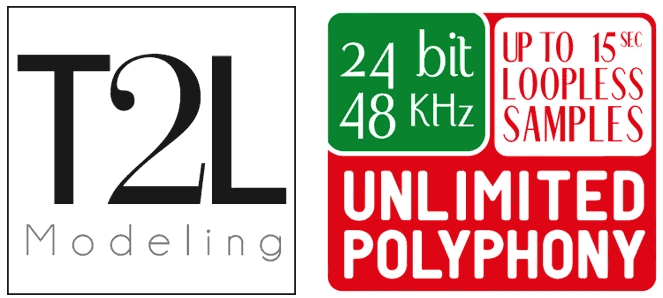
The T2L sound engine operates somewhat similarly to Roland's SuperNATURAL engine and allows players to change parameters on demand. For case, the user can modify sounds by changing certain preset parameters.
More often than not, Dexibell uses keybeds from Fatar, who are also responsible for the Nord-line from Clavia. While these aren't exactly bad (the high-finish TP/40 is quite practiced actually), they won't be winning any awards for playability.
The Dexibell Vivo S-line might not share the same notoriety of their distantly related Nord counterparts, but information technology does take some design cues, such as the slanted pitch and mod wheels and individual sections.
Dexibell as well makes panel-style home pianos, known every bit the Vivo H-line.
What's interesting is that these console models use generallythe aforementioned tech as Dexibell phase pianos, which makes them expensive nonetheless capable instruments.
Some of the features they inherited from Dexibell stage pianos include anexpandable sound library with 1.5GB wave retentivity, a wide selection of reverb and DSP effects, and back up for .wav, .aiff, .mp3, sound playback.
The H-line shows off Dexibell's sampling and modeling techniques beautifully, and do compete with the more seasoned veterans in the field.
15-2d long samples and modeled resonances, combined with decently tuned speakers, mean that Dexibell is a brand well worth considering if you lot get the chance to test information technology out.
Finally, Dexibell also produces organs, including the Classico L3 and the Combo J7, which emulate a church building and jazz electric organ respectively.
While Nord probably still has the digital organ market on lock, the Combo J7 is the showtime digital organ to take motorized drawbar faders, which might appeal to players who want evolving sounds.
Digital Piano & Keyboard Brands to Avoid
Williams

On the face of it, you might have your head turned past Williams, who produce great-looking instruments with similar stats on paper to their competitors, but at a fraction of the price.
The Legato III – their beginner model – retails for well under $500, while the upright digital, the Overture 2, is around $700; But price is where the positives stop.
The bottom line is that these pianos don't have the mechanics to back upward their aesthetics.
The range and quality of sampling is quite disappointing and the speakers are powerful enough only the sound quality isn't bully. The main issues lie with playability though.
The touch-sensitive keys feel like they belong in the dark ages compared with the advanced hammer action offerings from the big names, and the lack of dynamic control is very worrying. It feels like you lot're playing an old table-top from xxx years ago, no matter how high upward their product range you go.
The brand itself is endemic by Guitar Heart, only the instruments are manufactured by an outsource company in Prc.
Therefore it should come as a surprise that Williams pianos are heavily promoted via the chain of Guitar Middle stores and its affiliates (Musician'southward Friend, Woodwind & Brasswind, etc.)
Artesia
In terms of pricing, Artesia are a similar brand to Williams, and they're plain aiming at the beginner range more than seasoned pros.
If you're a Yamaha or Kawai aficionado, you'll exist astounded to note that you can pick up their digital grand – the AG-30 – for just most $1500.
The lesser line though is that it isn't worth the admittedly massive saving.

The build quality on the Artesia instruments is average to say the least – they're saving on parts left, correct and center.
The PA tabular array-summit serial, aimed at beginners, feel similar they couldn't withstand any kind of impact.
And mechanically, everything lags light years behind the large boys. The action is springy and mechanical, the sound is thin and pixelated, and the programming options are far too thin.
These guys go a long way toward proving the old aphorism that you become what you pay for.
Others
Information technology's not just these iii, though. There are several other minor brands out at that place that aren't worth your money. Omega and Galileo are two such examples.
A potential banana peel though is Suzuki. They have built themselves into a globe-famous piano brand in the far East, with their methods and their keyboards in thousands upon thousands of schools.
The bottom line though, is that their products simply aren't up to scratch.
Semi-Recommended Brands
At that place are ii brands that I couldn't include in either of the categories above. I don't necessarily "non recommend" these brands but in many cases there are just ameliorate options out at that place from other brands.
Kurzweil
Rewind back to the 1980s, and the Kurtzweil make was the market leader.
An unlikely partnership between Stevie Wonder and inventor Raymond Kurtzweil – who developed reading machines for the blind – saw them rise to the meridian thanks to the best replication of acoustic pianoforte sound on the market place past far.

At present, the audio that these machines generate is nevertheless pretty good, and they undoubtedly win the price war with their competitors (their main Clavinova competitor, the M110, merely costs around $1200).
However, they are let down past the action on their keyboards, which is clunky, heavy and reminiscent of the plastic keyboards of yesteryear.
This has to be partly down to their decision to sell the brand to Immature Chang, which was then acquired by Hyundai – I don't think there is the same level of focus and innovation anymore.
In fact, to make it worth your while considering 1 of Kurzweil's instruments, y'all need to exist looking at their acme stop.
The CUP1 – priced well above $2000 – boasts 100w of speaker output, upright-style design and lots of customization options.
For their flagship stage piano – Kurzweil Forte with 16GB of sounds and 23 programmable controllers – you'll pay even more coin.
The issue with the bear upon is less pronounced with these models, but if I was spending over $2000, I'd still want more.
Alesis
Alesis is another well-established brand that has been producing electronic musical instruments and audio equipment for over 30 years.
Present they more often than not specialize in making drum kits, multipads, MIDI-keyboards, and recording equipment, and they're actually pretty proficient at what they're doing.

However, if y'all're looking for a high-quality digital pianoforte, I'd recommend checking out the major brands start (the ones mentioned above).
Alesis merely doesn't have that much feel and know-how when it comes to pianos.
Their main focus is geared towards music makers (studio use) rather than pianoforte players who are looking for a natural, nuanced pianoforte sound and realistic key activeness.
However, if you're just starting out, an Alesis keyboard might be a good cost-efficient option that will become you off the ground playing the pianoforte.
One of the best options models in their armory I tin recommend is the Alesis Recital Pro, which unlike many other Alesis keyboards, features 88 fully weighted keys and offers pretty decent piano tones.
Final Thoughts
It'south a big market out in that location, but that doesn't mean yous have to get stuck with something yous don't desire.
The brands nosotros've looked at to a higher place offering excellent ranges that cater for anyone – from beginners to world-renowned pros, with all the ability levels and price points in betwixt.
Ultimately, you want to choose a piano that matches your power level first and foremost, only durability, reliability and warranty are all of import no matter who you are or your reason for buying.
On the applied science side, touch is everything if yous're coming from the acoustic world.
A skilful visitor should pay attending to how a pianoforte feels, besides as its integration with modern technology.
And on that side, information technology's important to make certain that your piano is future-proof; it should take enough of connectivity options to ensure that it won't get obsolete with the natural advances of global technology.
And then, over to y'all. Exercise y'all take any experiences with whatsoever of these brands – good or bad – that you'd similar to share.
What makes and models piece of work for you?
Let united states of america know in the comments and let's get a chat going. And of course, if y'all've plant this article useful, share information technology then that other people can get the benefit! Thanks for reading!
Yous might also like:
Yamaha Keyboards & Digital Pianos: The Definitive Guide

The Ultimate Guide to Buying a Digital Piano
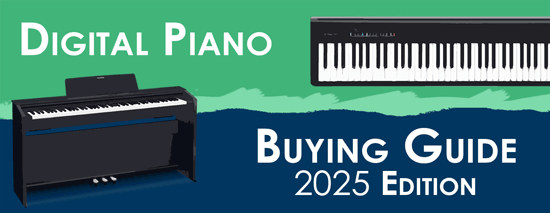
Best Digital Pianos & Keyboards (All Price Points)

Digital Piano vs Keyboard vs Synthesizer (Full Comparing)
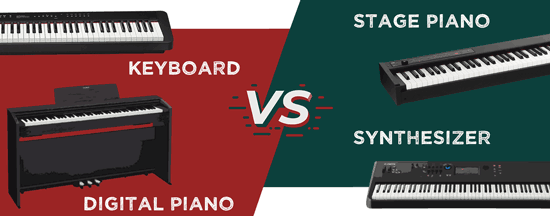
Best Digital Pianos for Beginners (Under $500)

Source: https://www.pianodreamers.com/digital-piano-brands/
0 Response to "Love Comes Again Digital Dreamerz 320"
Post a Comment